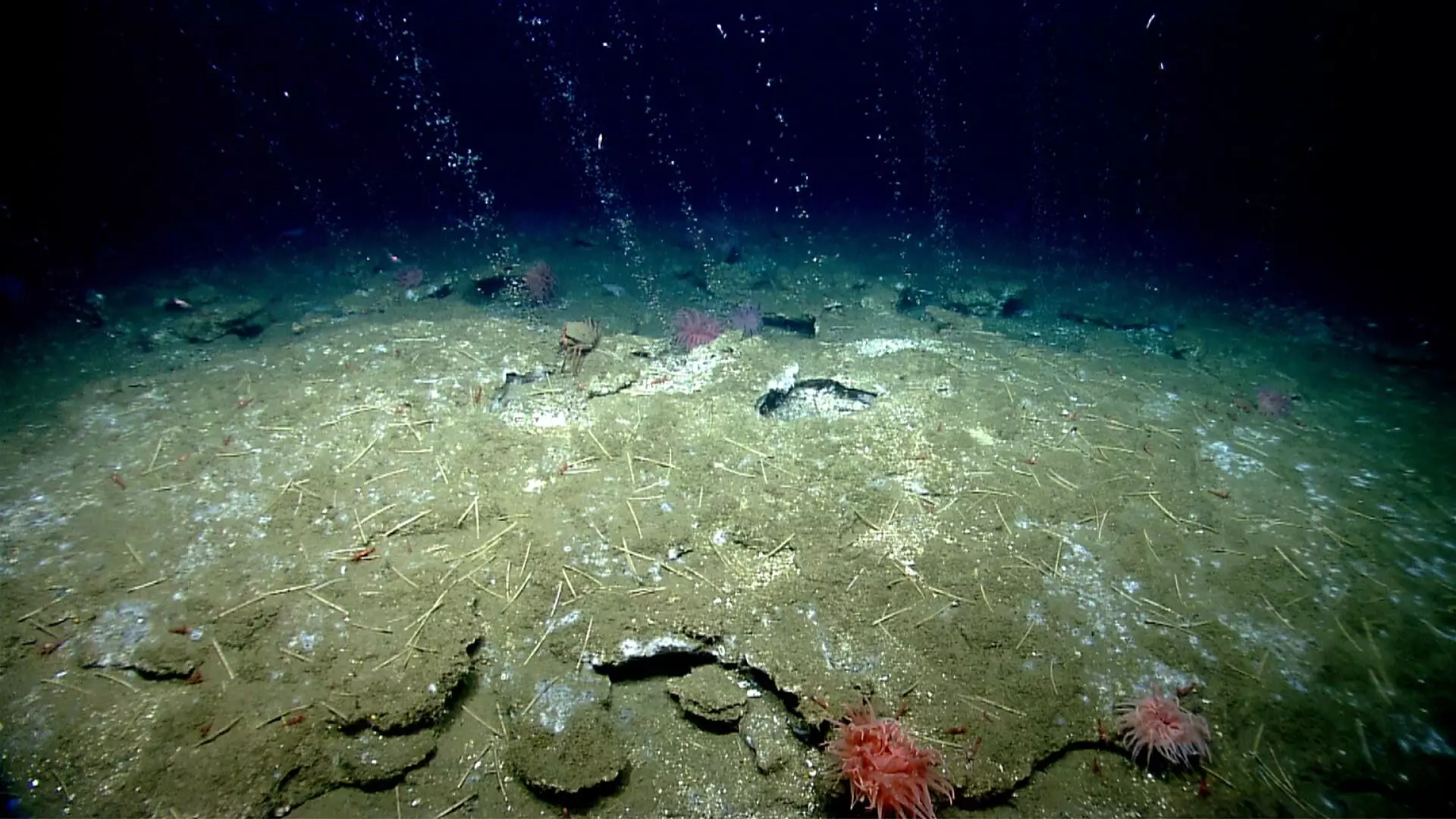Methane is a powerful greenhouse gas that is about 25 times more potent than carbon dioxide. When combined with water at low temperatures and high pressure, it forms methane hydrate, which is an ice-like solid found in large deposits under the seafloor. Estimates suggest that there are at least 1,800 gigatons of carbon stored in this form, with some projections going up to more than 20,000 gigatons. This is a significant amount compared to the 475 gigatons of carbon emitted by mankind in the form of CO2 since the start of industrialization. However, methane hydrate is fragile and can break down into methane and water if temperatures rise, leading to methane gas escaping from the sediment through “methane seeps.”
Scientists are worried that the release of methane from these deposits could intensify due to climate change, thereby exacerbating the greenhouse effect. The exact extent of this danger is still uncertain, but researchers are looking into historical data for insights. Previous warm periods on Earth have also existed, but the destabilization of methane hydrate deposits and its impact on outgassing remain unclear. Recent developments in methodology, such as dual clumped isotope thermometry, are helping shed light on this issue.
In 2020, a research group led by Jens Fiebig developed a method known as dual clumped isotope thermometry, which has now been demonstrated to be effective in a study published in Science Advances. This technique measures how heavy isotopes are grouped together in carbonate minerals formed from the outgassing methane. By analyzing these isotopes, researchers can calculate the temperature at which the carbonate formed and identify the contribution of factors other than temperature. Dr. Philip Staudigel, who was a key figure in the research, highlights that this method allows for a more accurate determination of sediment temperature during the carbonate formation process.
Understanding the processes involved in methane outgassing from hydrate deposits is crucial for assessing its potential impact on climate change. By examining historical data and utilizing advanced techniques like dual clumped isotope thermometry, scientists are gaining valuable insights into the behavior of methane hydrate deposits under different environmental conditions. This research is essential for predicting how methane release from these deposits may evolve in the future and its implications for the global climate.
Methane hydrate deposits represent a significant reservoir of carbon that has the potential to influence the Earth’s climate. By exploring innovative methods and studying past climates, researchers are working towards a better understanding of the risks associated with methane release from these deposits. Continued research in this field is essential for addressing the challenges posed by methane hydrate deposits in the context of climate change mitigation.



Leave a Reply